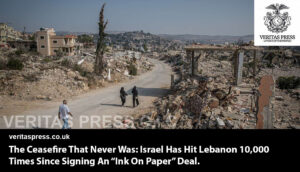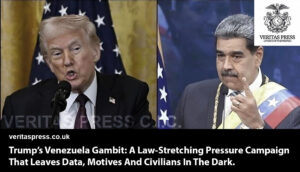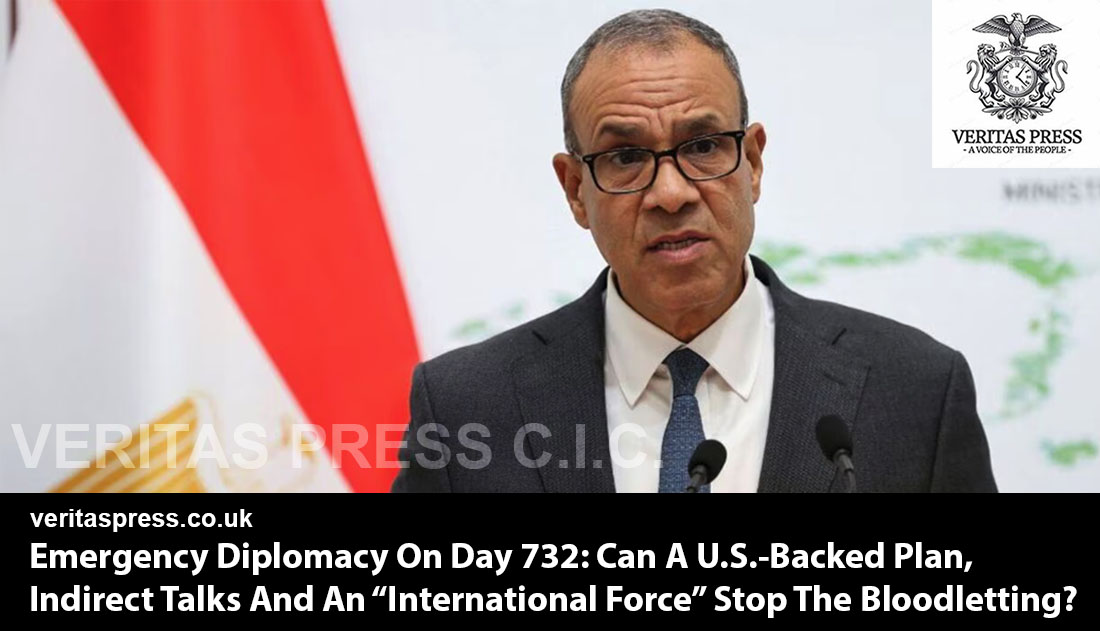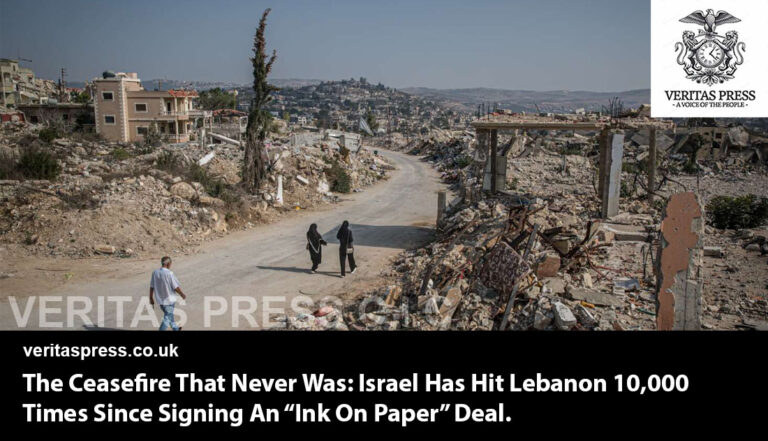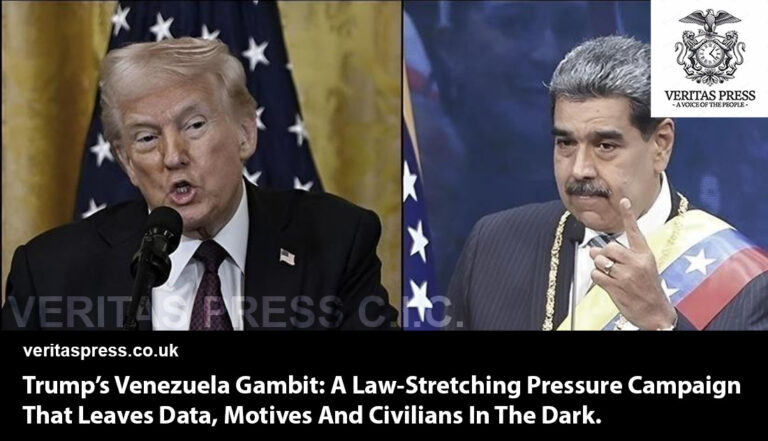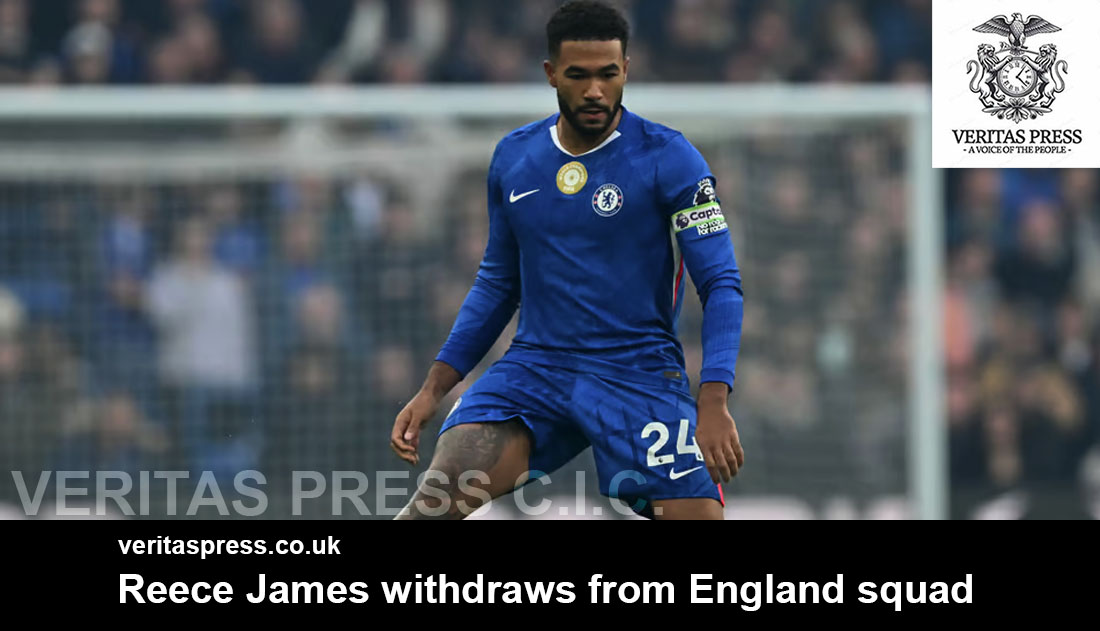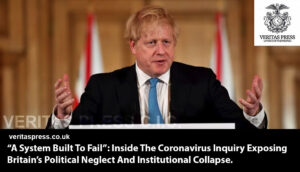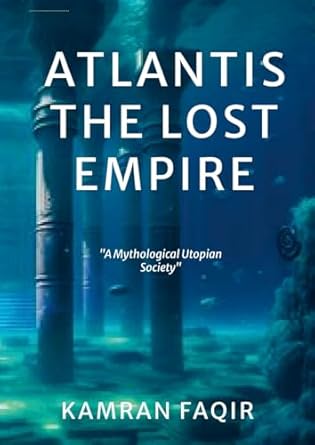Press Release: Veritas Press C.I.C.
Author: Kamran Faqir
Article Date Published: 07 Oct 2025 at 13:58 GMT
Category: Middle East | Palestine-Gaza-West Bank | US-Isral At War
Source(s): Veritas Press C.I.C. | Multi News Agencies

Business Ads
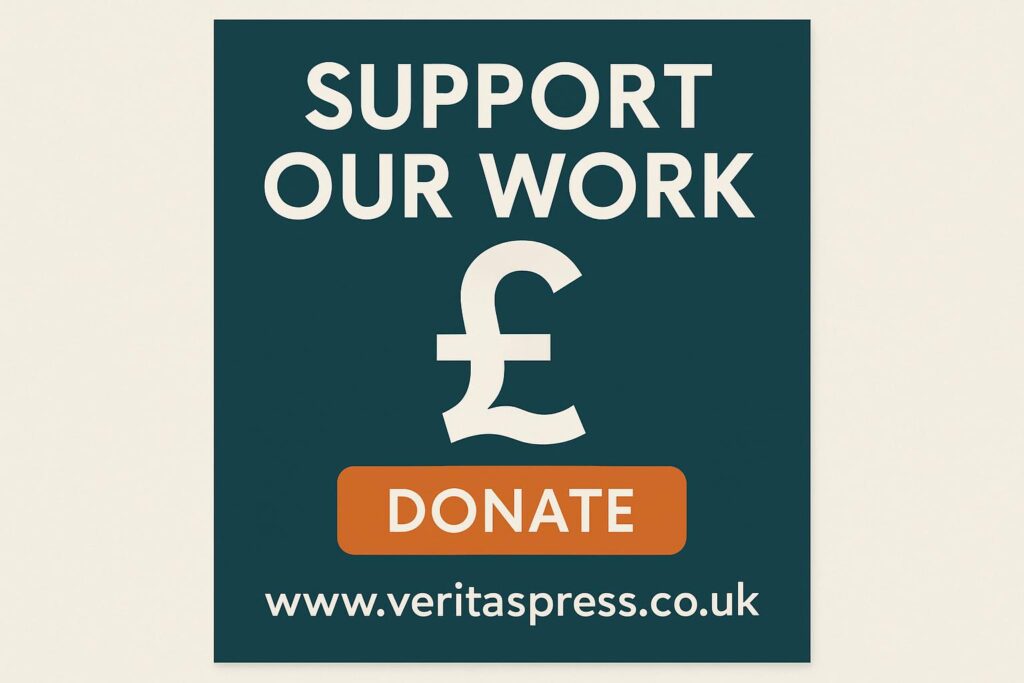

Two years into the Gaza war, indirect talks in Sharm el-Sheikh, Egypt, around a 20-point Trump plan have created a diplomatic opening. But the plan’s success hinges on the hardest question of all: what exactly is an “International Stabilisation Force,” who will control it, what legal mandate will it have, and will it be able to protect civilians while avoiding becoming an occupying force?
Key Reporting And Facts:-
- UNRWA repeated a blunt demand for “an immediate ceasefire” on the second anniversary.
- Israeli and Hamas delegations entered indirect talks in Egypt over President Trump’s 20-point plan, which centres on hostage releases, a ceasefire, and disarmament/transition under international oversight.
- Germany’s foreign minister called the plan’s first phase achievable quickly and described talks as the most “promising” seen in two years.
Investigative Analysis — The Three Fault Lines That Could Make Or Break Any Deal:
- Mandate ambiguity will be weaponised.
The phrase “international force” has become a diplomatic blank cheque. Historically, stabilisation missions succeed when the mandate is clear (protection of civilians, buffer zones, disarmament only if consensual). When vague, the stronger party interprets it to suit military aims; in Gaza, that risks being a fig leaf for continued Israeli security operations or selective withdrawal. Sultan Barakat’s warnings about mandate vagueness echo this risk. - Contributors and political legitimacy matter.
Who provides troops, Western militaries, regional actors, or a UN-mandated multinational force, determines operational independence. Regional contributors may face political constraints or retaliatory risk; Western powers risk domestic political blowback; UN missions need Security Council backing that has often been blocked or weakened in this conflict. The negotiations so far have relied on Egypt, Qatar, the U.S., and mediators, not a UN Security Council mandate. - Sequencing: hostages, ceasefire, reconstruction, all are stickier than they look.
The 72-hour hostage exchange window in the plan is politically attractive but operationally fraught: identifying living captives, arranging safe handovers, and sequencing withdrawals across a devastated urban landscape with degraded communications is a huge logistical task. The lack of a robust neutral monitor (e.g., ICRC with guaranteed access and armed protection) could cripple implementation.
Reporting leads/sources to pursue for a deeper investigative story
- Track the negotiators: who represents Hamas (e.g., Khalil al-Hayya) and Israeli interlocutors, personal networks and prior ceasefire roles (Reuters profile).
- Obtain documents/texts of the “20-point” plan and any bilateral memoranda on troop contributions, rules of engagement, and exit criteria.
- File FOI / diplomatic cables requests (where possible) to Western governments about contingency planning for troop commitments and liability.
- Interview regional contributors (Egypt, Qatar), UN legal advisers, and military planners about precedent missions (East Timor, Kosovo) and how they map to Gaza.
Bottom line: The talks are a diplomatic opening; without a transparent, enforceable multilateral mandate and neutral operational architecture, any “international force” risks becoming a short-lived fig leaf for continued violence rather than a path to durable protection.


